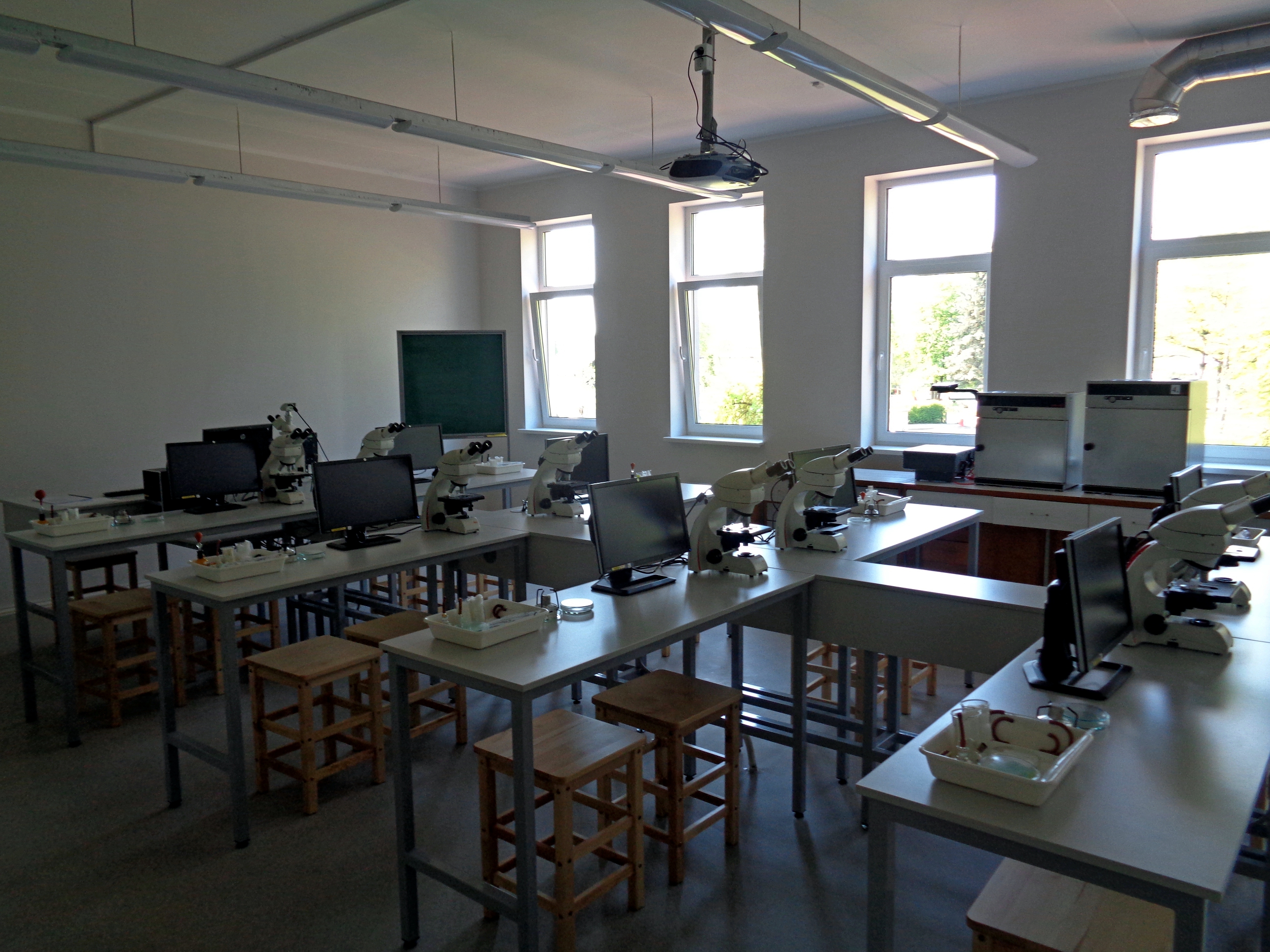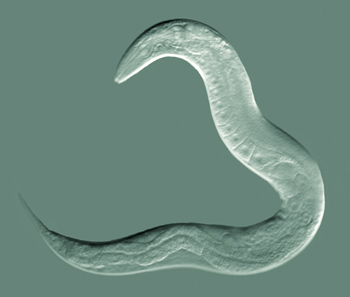|
Applied Microbiology
The branches of microbiology can be classified into Pure science, pure and applied sciences. Microbiology can be also classified based on Taxonomy (biology), taxonomy, in the cases of bacteriology, mycology, protozoology, and phycology. There is considerable overlap between the specific branches of microbiology with each other and with other disciplines, and certain aspects of these branches can extend beyond the traditional scope of microbiology In general the field of microbiology can be divided in the more fundamental branch (pure microbiology) and the applied microbiology (biotechnology). In the more fundamental field the organisms are studied as the subject itself on a deeper (theoretical) level. Applied microbiology refers to the fields where the micro-organisms are applied in certain processes such as brewing or fermentation. The organisms itself are often not studied as such, but applied to sustain certain processes. Pure microbiology * Bacteriology: the study of bacteria ... [...More Info...] [...Related Items...] OR: [Wikipedia] [Google] [Baidu] |
Nematology
Nematology is the scientific discipline concerned with the study of nematodes, or roundworms. Although nematological investigation dates back to the days of Aristotle or even earlier, nematology as an independent discipline has its recognizable beginnings in the mid to late 19th century.Chen, Z. X., Chen, S. Y., and Dickson, D. W. (2004). "A Century of Plant Nematology", pp. 1–42 in ''Nematology Advances and Perspectives'', Vol 1. Tsinghua University Press, Beijing, China.Chitwood, B. G., and Chitwood, M. B. (1950). "An Introduction to Nematology", pp. 1–5 in ''Introduction to Nematology''. University Park Press, Baltimore. History: pre-1850 Nematology research, like most fields of science, has its foundations in observations and the recording of these observations. The earliest written account of a nematode "sighting," as it were, may be found in the Pentateuch of the Old Testament in the Bible, in the Fourth Book of Moses called Numbers: "And the Lord sent fiery serpen ... [...More Info...] [...Related Items...] OR: [Wikipedia] [Google] [Baidu] |
Evolutionary Microbiology
Evolution is change in the heritable characteristics of biological populations over successive generations. These characteristics are the expressions of genes, which are passed on from parent to offspring during reproduction. Variation tends to exist within any given population as a result of genetic mutation and recombination. Evolution occurs when evolutionary processes such as natural selection (including sexual selection) and genetic drift act on this variation, resulting in certain characteristics becoming more common or more rare within a population. The evolutionary pressures that determine whether a characteristic is common or rare within a population constantly change, resulting in a change in heritable characteristics arising over successive generations. It is this process of evolution that has given rise to biodiversity at every level of biological organisation, including the levels of species, individual organisms, and molecules. The theory of evolution by na ... [...More Info...] [...Related Items...] OR: [Wikipedia] [Google] [Baidu] |
Cell Biology
Cell biology (also cellular biology or cytology) is a branch of biology that studies the structure, function, and behavior of cells. All living organisms are made of cells. A cell is the basic unit of life that is responsible for the living and functioning of organisms. Cell biology is the study of structural and functional units of cells. Cell biology encompasses both prokaryotic and eukaryotic cells and has many subtopics which may include the study of cell metabolism, cell communication, cell cycle, biochemistry, and cell composition. The study of cells is performed using several microscopy techniques, cell culture, and cell fractionation. These have allowed for and are currently being used for discoveries and research pertaining to how cells function, ultimately giving insight into understanding larger organisms. Knowing the components of cells and how cells work is fundamental to all biological sciences while also being essential for research in biomedical fields such as ... [...More Info...] [...Related Items...] OR: [Wikipedia] [Google] [Baidu] |
Cellular Microbiology
Cellular microbiology is a discipline that bridges microbiology and cell biology. The term "cellular microbiology" was coined by the authors of the book of the same title published in 1996. Cooperation and mutual dependency between microbiology and cell biology had been increasing in the years before that, and the emergence of a new discipline had been suggested and discussed in several scientific conferences. Cellular microbiology attempts to use pathogenic microorganisms as tools for cell-biology research, and to employ cell-biology methods to understand the pathogenicity of microorganisms. Toxins and virulence factors from microbes have been used for decades to influence processes in eukaryotic cells and to study them. It has increasingly appeared that applying a purified toxin on a cell does not always provide the complete picture, and that understanding the role of the toxin in pathogenicity, the way the toxin promotes the microbe, the way the toxin is produced and the co- ... [...More Info...] [...Related Items...] OR: [Wikipedia] [Google] [Baidu] |
Molecular Biology
Molecular biology is the branch of biology that seeks to understand the molecular basis of biological activity in and between cells, including biomolecular synthesis, modification, mechanisms, and interactions. The study of chemical and physical structure of biological macromolecules is known as molecular biology. Molecular biology was first described as an approach focused on the underpinnings of biological phenomena - uncovering the structures of biological molecules as well as their interactions, and how these interactions explain observations of classical biology. In 1945 the term molecular biology was used by physicist William Astbury. In 1953 Francis Crick, James Watson, Rosalind Franklin, and colleagues, working at Medical Research Council unit, Cavendish laboratory, Cambridge (now the MRC Laboratory of Molecular Biology), made a double helix model of DNA which changed the entire research scenario. They proposed the DNA structure based on previous research done by Ro ... [...More Info...] [...Related Items...] OR: [Wikipedia] [Google] [Baidu] |
Gene
In biology, the word gene (from , ; "...Wilhelm Johannsen coined the word gene to describe the Mendelian units of heredity..." meaning ''generation'' or ''birth'' or ''gender'') can have several different meanings. The Mendelian gene is a basic unit of heredity and the molecular gene is a sequence of nucleotides in DNA that is transcribed to produce a functional RNA. There are two types of molecular genes: protein-coding genes and noncoding genes. During gene expression, the DNA is first copied into RNA. The RNA can be directly functional or be the intermediate template for a protein that performs a function. The transmission of genes to an organism's offspring is the basis of the inheritance of phenotypic traits. These genes make up different DNA sequences called genotypes. Genotypes along with environmental and developmental factors determine what the phenotypes will be. Most biological traits are under the influence of polygenes (many different genes) as well as gen ... [...More Info...] [...Related Items...] OR: [Wikipedia] [Google] [Baidu] |
Microbial Genetics
Microbial genetics is a subject area within microbiology and genetic engineering. Microbial genetics studies microorganisms for different purposes. The microorganisms that are observed are bacteria, and archaea. Some fungi and protozoa are also subjects used to study in this field. The studies of microorganisms involve studies of genotype and expression system. Genotypes are the inherited compositions of an organism. (Austin, "Genotype," n.d.) Genetic Engineering is a field of work and study within microbial genetics. The usage of recombinant DNA technology is a process of this work. The process involves creating recombinant DNA molecules through manipulating a DNA sequence. That DNA created is then in contact with a host organism. Cloning is also an example of genetic engineering. Since the discovery of microorganisms by Robert Hooke and Antoni van Leeuwenhoek during the period 1665-1885 they have been used to study many processes and have had applications in various areas of study ... [...More Info...] [...Related Items...] OR: [Wikipedia] [Google] [Baidu] |
Microbial Ecology
Microbial ecology (or environmental microbiology) is the ecology of microorganisms: their relationship with one another and with their environment. It concerns the three major domains of life—Eukaryota, Archaea, and Bacteria—as well as viruses. Microorganisms, by their omnipresence, impact the entire biosphere. Microbial life plays a primary role in regulating biogeochemical systems in virtually all of our planet's environments, including some of the most extreme, from frozen environments and acidic lakes, to hydrothermal vents at the bottom of deepest oceans, and some of the most familiar, such as the human small intestine. As a consequence of the quantitative magnitude of microbial life (calculated as cells; eight orders of magnitude greater than the number of stars in the observable universe) microbes, by virtue of their biomass alone, constitute a significant carbon sink. Aside from carbon fixation, microorganisms' key collective metabolic processes (including nitro ... [...More Info...] [...Related Items...] OR: [Wikipedia] [Google] [Baidu] |
Pathogens
In biology, a pathogen ( el, πάθος, "suffering", "passion" and , "producer of") in the oldest and broadest sense, is any organism or agent that can produce disease. A pathogen may also be referred to as an infectious agent, or simply a germ. The term ''pathogen'' came into use in the 1880s. Typically, the term ''pathogen'' is used to describe an ''infectious'' microorganism or agent, such as a virus, bacterium, protozoan, prion, viroid, or fungus. Small animals, such as helminths and insects, can also cause or transmit disease. However, these animals are usually referred to as parasites rather than pathogens. The scientific study of microscopic organisms, including microscopic pathogenic organisms, is called microbiology, while parasitology refers to the scientific study of parasites and the organisms that host them. There are several pathways through which pathogens can invade a host. The principal pathways have different episodic time frames, but soil has the longest ... [...More Info...] [...Related Items...] OR: [Wikipedia] [Google] [Baidu] |
Microbial Pathogenesis
Microbial pathogenesis is a field of microbiology started at least as early as 1988, with the identification of the triune Falkow's criteria aka molecular Koch's postulates. In 1996 Fredricks and Relman proposed a seven-point list of "Molecular Guidelines for Establishing Microbial Disease Causation", because of "the discovery of nucleic acids" by Watson and Crick "as the source of genetic information and as the basis for precise characterization of an organism In biology, an organism () is any living system that functions as an individual entity. All organisms are composed of cells ( cell theory). Organisms are classified by taxonomy into groups such as multicellular animals, plants, and fu ...." The subsequent development of the "ability to detect and manipulate these nucleic acid molecules in microorganisms has created a powerful means for identifying previously unknown microbial pathogens and for studying the host-parasite relationship." __TOC__ Postulates for t ... [...More Info...] [...Related Items...] OR: [Wikipedia] [Google] [Baidu] |
Bacterial Cell Structure
The bacterium, despite its simplicity, contains a well-developed cell structure which is responsible for some of its unique biological structures and pathogenicity. Many structural features are unique to bacteria and are not found among archaea or eukaryotes. Because of the simplicity of bacteria relative to larger organisms and the ease with which they can be manipulated experimentally, the cell structure of bacteria has been well studied, revealing many biochemical principles that have been subsequently applied to other organisms. Cell morphology Perhaps the most elemental structural property of bacteria is their morphology (shape). Typical examples include: * coccus (circle or spherical) * bacillus (rod-like) * coccobacillus (between a sphere and a rod) * spiral (corkscrew-like) * filamentous (elongated) Cell shape is generally characteristic of a given bacterial species, but can vary depending on growth conditions. Some bacteria have complex life cycles involving the produ ... [...More Info...] [...Related Items...] OR: [Wikipedia] [Google] [Baidu] |





